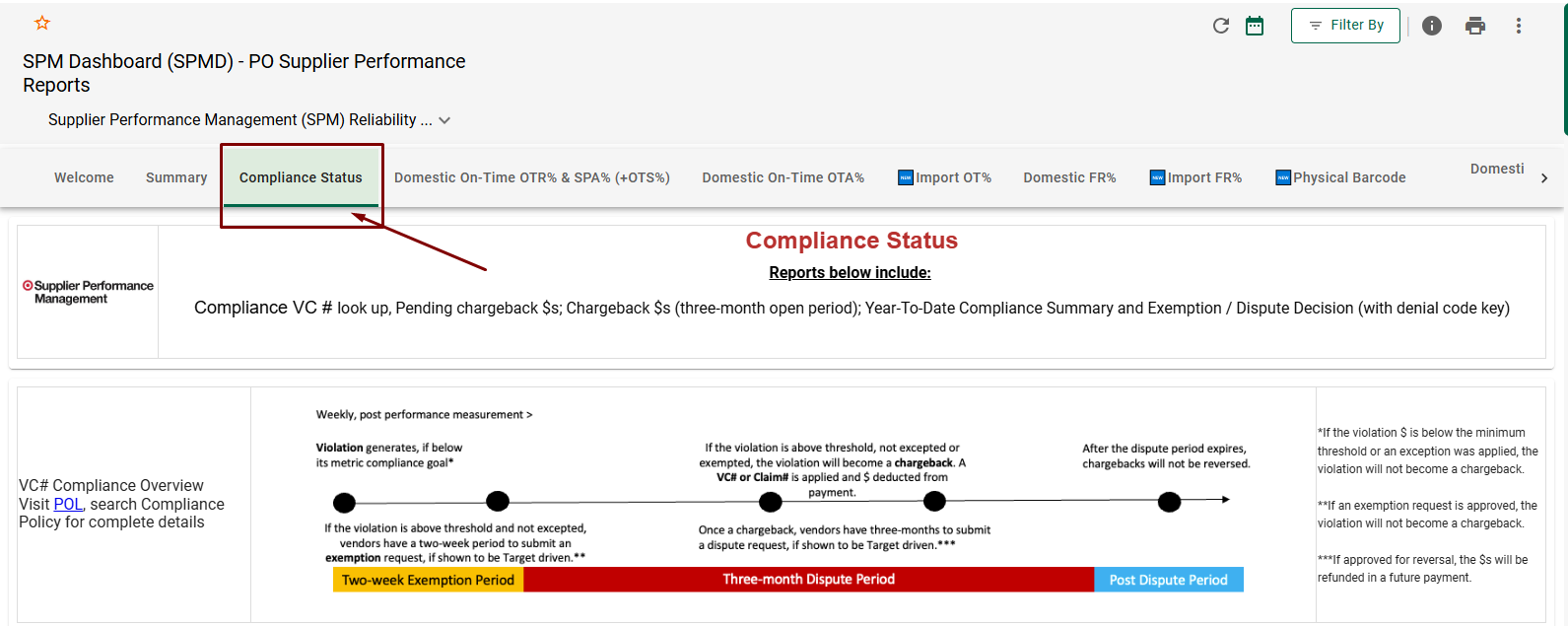Target Dispute Denial Codes: List and How to Respond
 Every year, suppliers lose millions just because deduction disputes get denied. Too often, there is no proper follow-up to recover those funds.
Every year, suppliers lose millions just because deduction disputes get denied. Too often, there is no proper follow-up to recover those funds.
At Target, denial codes hold the key to understanding why disputes fall through and how to close the gap faster. You will find these codes in the Synergy supplier portal, which reveal clear reasons for missing documents to late submissions.
For accounts receivable teams, knowing these codes inside and out is not just about winning disputes. It is about stopping revenue from slipping away in the first place. In this guide, we will share the complete list of Target denial codes, walk you through the six most common ones, and give you practical tips to respond effectively and confidently.
Why Dispute Denials Matter in Deduction Management
Dispute denials are more than an inconvenience. They directly impact a supplier’s bottom line. Each denial means lost revenue, and without knowing why it happened, recovery becomes nearly impossible.
For Target suppliers, denial codes act as clear signals. They reveal the issue, whether it is missing paperwork, late submissions, ASN errors, or compliance gaps, so teams can avoid repeating mistakes. By understanding these codes, accounts receivable teams can target the root cause, submit the right documentation, and increase recovery success.
Denials are not the end of the road. With the right approach, suppliers can reclaim revenue, improve processes, and prevent future losses.
Where to Find Denial Codes in Target’s Synergy Portal
Target provides denial codes directly in the Synergy supplier portal. If a dispute is rejected, the system attaches a specific denial code to explain why. Here is where to find them:
- Log in to Partners Online to access your Target supplier account.

- Click on the Supplier Performance Management Dashboard, where dispute and compliance data is collected.

- Select Compliance Status to see dispute results.

- Scroll to “Exemption Request and/or Dispute Decision Data” to find the full list of denial and return codes.
Each denial code comes with Target’s official explanation. Since the language can sometimes be technical or unclear, we have simplified the entire list below into plain, easy-to-understand terms. This way, you’ll quickly grasp what each code means and know how to respond confidently.
Full List of Target Denial Codes (D01–D40)
| Code | Description / Notes (Official Wording) |
| D01 | Incorrect Vendor Ready Ship (VRS) information. VRS entry shows latest available pick up date being outside revised ship window. |
| D04 | Fatal errors in the EDI 856 (ASN). To resolve, fix errors found in the EDI 864 and resend the EDI 856 as soon as possible. |
| D05 | True rule error. Target team research indicates error was due to vendor actions and does not fit into other denial codes. Review compliance program guidelines on Partners Online (POL). |
| D06 | Incomplete and/or missing documentation provided in submitted approval / reversal request. |
| D07 | Prepaid carrier error. The PO / location / shipment was delivered incorrectly by the vendor managed carrier. Prepaid vendors are responsible for the PO / location / shipment until it arrives to the Target DC location. Ensure future shipments are delivered correctly by the carrier. |
| D08 | No documentation was submitted with the request. |
| D09 | Incorrect documentation. Examples include: the Bill of Lading (BOL) is for a different location / shipment, BOL is not signed/dated (collect shipment), or the Delivery Receipt (DR) is for a different location / shipment. |
| D10 | Dispute period expired. Vendors have three months from chargeback date to dispute. Once the time has expired, Target will no longer review and process the dispute. |
| D11 | Target Accounts Payable (AP) did not pay. There is no DMCB number provided. The ordered quantity has not yet been paid for in full by Target AP. This information indicates the ordered quantity was not shipped complete. Until Target AP pays the invoice in full, the Supplier Performance Management team cannot review your claim. |
| D12 | The PO/location/shipment arrived outside the revised ship window. |
| D13 | The Fill Rate Original order quantity was not received. The vendor is held to the FRO compliance rule. |
| D14 | Target did not grant a window extension. Lack of email documentation from Target IA confirmed extension. |
| D19 | Fill Rate charge due to additional shipment(s) received after Fill Rate 1st receipt + 7 day measurement. |
| D20 | PO must be entered into Vendor Ready Ship (VRS) by 11 am CT 2 business days prior to revised ship begin date. |
| D22 | The two-week weather exemption period expired. |
| D23 | The Fill Rate PO/location original order quantity was updated and the Target location did not receive the revised quantity. |
| D24 | Shipment did not meet assigned EDI 856 (ASN) compliance date. |
| D25 | Timely PO/location revisions were not submitted. |
| D36 | PO must be released with the expected time frame. |
| D37 | PO Pickup date was not adhered to. |
| D38 | A barcode could not be scanned due to absence, blockage, or damage, or matching barcode information was not on ASN. |
| D39 | Fill Rate charge due to additional shipment(s) received after Fill Rate 1st receipt + 34-day measurement. |
| D40 | Shipment or item level details on the EDI 856 did not match the BOL or PO details. |
Key Codes Every Supplier Should Know
Target has dozens of denial codes, but a handful come up more often than others. These common codes usually link back to documentation issues, timing mistakes, or gaps in processes. Knowing these codes upfront helps suppliers catch potential problems early, before they impact revenue.
Here are the six most frequent Target denial codes and why they matter:
D06 – Incomplete or Missing Documentation
This is one of the most common reasons disputes are denied. If even one required document, like a Bill of Lading or Proof of Delivery, is missing or unclear, the dispute won’t move forward.
D10 – Dispute Period Expired
Target has a strict three-month window to file disputes. If you miss this deadline, your case will be closed regardless of how strong your evidence may be.
D12 – Shipment Arrived Outside the Revised Ship Window
Timeliness matters. Even if the shipment’s condition is perfect, late arrivals cause denials.
D14 – No Documented IA Extension
Verbal or assumed shipping extensions don’t count. Without written confirmation from Target
D20 – VRS Not Entered on Time
Vendor Ready Ship information must be entered by 11 a.m. Central Time, two business days before the revised ship date. Any delay here results in an automatic denial.
D04 – ASN Errors
Advanced Shipping Notices are often rejected due to formatting mistakes or mismatched details. Fatal ASN errors block disputes from moving forward entirely.
.jpg?width=1024&height=600&name=Brown%20Modern%206%20Point%20Infographic%20Brainstorm%20Graph%20(1).jpg) These six codes represent the majority of denials in Synergy and can cost suppliers tens of thousands of dollars if not managed properly.
These six codes represent the majority of denials in Synergy and can cost suppliers tens of thousands of dollars if not managed properly.
How to Dispute These Codes
Getting a denial doesn’t always mean the dispute is over. Suppliers can resubmit claims through Target’s Synergy portal if they gather the right evidence and fix the root issue. The process is straightforward:
- Log in to the Synergy Portal with your Target supplier account.
- Create a new dispute and select the deduction linked to the denial.
- Fill in relevant details.
- Resubmit the claim for review. Often, corrected disputes get approved.
If a denial is final and can’t be overturned, for example, if the dispute period expired under D10, the focus should shift to prevention and improving your processes.
Prevention Tips for Suppliers
Stopping denials before they happen is always easier than chasing resubmissions. Here are some practical steps to take:
- Track dispute deadlines carefully with a calendar to ensure claims are filed within Target’s three-month window.
- Double-check ASNs for accuracy in your EDI system to avoid D04 errors.
- Get written confirmation for any shipping date changes from Target Inventory Analysts.
- Audit Vendor Ready Ship (VRS) entries to ensure timely and accurate submissions.
- Train your accounts receivable and logistics teams so everyone knows Target’s rules and understands how denial codes work.
Following these steps not only cuts down on denials but also saves time and effort on rework.
How iNymbus Helps Here
Managing denial codes manually can be overwhelming for many suppliers. Detailed documentation, portal navigation, and strict deadlines create a heavy workload. iNymbus automation simplifies this:
- Bots automatically gather and upload essential paperwork like Bills of Lading and Proof of Delivery.
- The system files disputes within the allowable time, reducing D10 denials.
- Built-in validation minimizes ASN and VRS errors before submissions.
- By managing high volumes of disputes, iNymbus frees accounts receivable teams to focus on strategy instead of repetitive tasks.
This leads to faster dispute resolutions, higher recovery rates, and significantly less revenue lost to denials.
Conclusion
Target denial codes are not just technical terms; they are clues that show why disputes fail and how suppliers can improve. By understanding the common codes, following the right dispute process, and strengthening prevention efforts, suppliers can safeguard their revenue and enhance cash flow.
Being proactive with Target deductions is no longer optional; it is essential to protect millions of dollars from slipping through the cracks.



